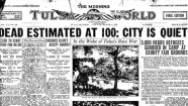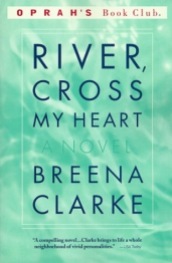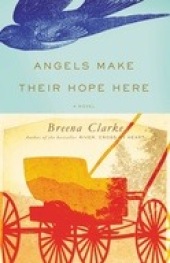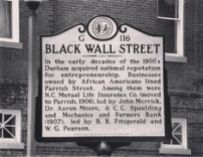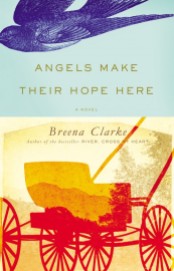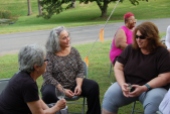How must they have felt I ask. I write historical fiction primarily from an urge to re-tell the past, to rehabilitate the skimpy, fractured, fragmented and often hostile narratives of the people of The Americas, the so-called New World. I believe that much of the national narrative of The United States is based on limited facts, racially motivated lies and the visceral belief that all people are NOT created equally. Sometimes it feels like I have a score to settle, an injury to repair. I think I must be a caretaker of imagination so that our race of people are not unimagined and thus disappear from the earth. I feel I need to be like Scheherazade. I think I survive daily because I’m able to continue to tell stories of myself, of ourselves.



Tulsa, Oklahoma – 1921
Hundreds of bodies are thought to have been shoved into mass graves, dumped in the Arkansas River or loaded onto trains, victims of The Tulsa Race Massacre of May – June, 1921.
As recently as February, 2020, The city of Tulsa announced plans to conduct a limited excavation of the site of a possible mass grave containing bodies of African Americans.
Pearl Miller, my maternal grandmother always spoke of Tulsa, Oklahoma with delight, in glowing terms. She’d been there as a child, part of a migration of African Americans leaving the south. Throughout her life she kept a child’s awe and admiration for it. She didn’t mention the massacre of 1921 which for most of the twentieth century has been referred to as the Tulsa Race Riot.
A massacre is defined as an indiscriminate and brutal slaughter of people. A riot is a violent disturbance of the peace by a crowd.
I believe the events of June, 1921 would best be defined as a massacre.
May 31, 1921
“During the night and day of the riot, deputized whites killed more than 300 African Americans. They looted and burned to the ground 40 square blocks of 1,265 African American homes, including hospitals, schools, and churches, and destroyed 150 businesses. White deputies and members of the National Guard arrested and detained 6,000 black Tulsans who were released only upon being vouched for by a white employer or other white citizen. Nine thousand African Americans were left homeless and lived in tents well into the winter of 1921.”
From “Burning Tulsa: The Legacy of Black Dispossession,” Linda Christensen
More on The Legacy of Black Dispossession
Voices of those who survived
“I could see planes circling in mid-air. They grew in number and hummed, darted and dipped low. I could hear something like hail falling upon the top of my office building. Down East Archer, I saw the old Mid-Way hotel on fire, burning from its top, and then another and another and another building began to burn from their top,” wrote Buck Colbert Franklin (1879-1960).
The Oklahoma lawyer, father of famed African-American historian John Hope Franklin(1915-2009), described the attack by hundreds of whites on the thriving black neighborhood known as Greenwood in the booming oil town. “Lurid flames roared and belched and licked their forked tongues into the air. Smoke ascended the sky in thick, black volumes and amid it all, the planes—now a dozen or more in number—still hummed and darted here and there with the agility of natural birds of the air.”
Franklin writes that he left his law office, locked the door, and descended to the foot of the steps. continue at Smithsonian Magazine May 2016

Pearl Miller Higgins
My grandmother didn’t share any specific stories. She just spoke of the town admiringly. I reach back and scratch around in my memory and I have no recollection that she spoke of the massacre or of any trouble. But we always had the sense that there had been, that there could be, that there was racial trouble.
Even if nothing dire or transformational happens in a place, it changes over time. I learned this the first time I’d gone away from my hometown, Washington, D.C., and returned to find it not the same – block after block was not the same. At first I took it personally. The town had refused to remain like the photo in my brain, the snapshot I’d carried away vowing always to remember it just so. One aspect of the imaginative work I like to do is archival. I preserve a snapshot of words about the days based on first-hand reports if I can find them and pictures I build from interior interrogation. What must they have been thinking, smelling, feeling? So for the story surrounding the events following the Tulsa Massacre of 1921, I weave the known experience of my grandmother with what my text needs. The two are never the same. I don’t write auto fiction or family memoir.
Over the years, I’ve maintained an interest in the events of this little-known racial genocide. As we approach the one hundredth anniversary of the massacre, I’m imagining those events and juxtaposing fictional accounts with the so-called official historical record. How do I plumb my own feelings of connection to the events to mine them for my story and my characters?
And now, Trump has callously decided to launch his reelection campaign in Tulsa on Juneteenth. He is making his hostility to the lives and feelings of Black People very plain.
I’ve reflected on the imaginary Tulsa, Oklahoma of my debut novel, River, Cross My Heart. I realize that I wanted to invest my depiction of the town in the same ways that my grandmother did. It was a place of pride, of childlike wonder. I wanted to attach to that feeling of magic and security in a place that had a large, successful African-American population. This is the image that stayed in my grandmother’s mind and is the depiction that has passed to me. I developed the character of Pearl – which is my maternal grandmother’s name – as a vessel to explore the feelings my grandmother must have experienced in the Black incorporated towns in Oklahoma.
Breena Clarke reads an excerpt of River, Cross My Heart that describes Tulsa
Experience the new audiobook version with narration by Karen Chilton, produced by Recorded Books.
Explore Breena Clarke’s books at http://www.BreenaClarke.com
Some source books on Tulsa massacre of 1921:
Oklahoma Commission to study the Tulsa Race Riot Report
Black History in Oklahoma-a resource book, published by Oklahoma City Public Schools
Black Wall Street by Hannibal Johnson
Death in a Promised Land:The Tulsa Race Riot of 1921, by Scott Ellsworth
The Burning: Massacre, Destruction, and the TulsaRace Riot of 1921 by Tim Madigan,
Reconstructing the Dreamland by Alfred Brophy, Oxford University Press




















